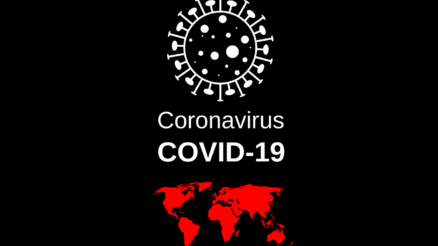In modern business world, strategic travel is often a linchpin for growth, client engagement, and team collaboration.
Crafting a compelling business case for travel is a skill that can significantly impact the success of such ventures.
In this blog post, we will delve into the intricacies of “how to write a business case for travel,” equipping you with the essential tools to present a persuasive argument for your travel plans.
From understanding the purpose of your journey to conducting a thorough cost-benefit analysis and addressing stakeholder concerns, this step-by-step walkthrough will empower you to navigate the process of articulating the value and necessity of business travel within your organization.
Join us on this journey as we unlock the key components to construct a convincing narrative that not only gains executive approval but also ensures the seamless execution of your travel aspirations.
what is a business case?
A business case is a detailed document that outlines the justification for initiating a specific business project or venture.
It serves as a comprehensive argument, presenting the reasoning and evidence for why a particular course of action should be pursued.
Business cases are typically prepared to support decision-making processes, seeking approval, funding, or resources from stakeholders within an organization.
A well-constructed business case is crucial for securing support, resources, and approvals from decision-makers within an organization.
It provides a structured and evidence-based approach to justifying business decisions and helps ensure that proposed initiatives align with the strategic goals of the organization.
For Further reading: How to Write a Good Business Case?
Why writing a business case for travel is important?
Writing a business case for travel is crucial for several reasons, as it provides a structured and evidence-based rationale for initiating travel-related activities within an organization.
Here are five key reasons why it’s important:
Strategic Alignment
A well-crafted business case ensures that the proposed travel aligns with the overall strategic objectives and goals of the organization. It helps stakeholders understand how the travel supports the company’s mission and contributes to its long-term success.
Resource Justification
Travel often incurs significant expenses, including transportation, accommodation, and meals. A business case provides a detailed breakdown of these costs and justifies the allocation of resources by demonstrating the anticipated return on investment (ROI) and the overall value the travel will bring to the organization.
Risk Mitigation
Travel inherently involves risks, whether logistical, financial, or operational. A business case allows for the identification and assessment of potential risks, providing an opportunity to develop strategies for mitigation. This proactive approach helps organizations navigate potential challenges and uncertainties associated with the proposed travel.
Stakeholder Buy-In
Effective communication is key to gaining support from stakeholders. A well-articulated business case outlines the benefits of the travel, addresses concerns, and demonstrates how the interests of key stakeholders are considered. This, in turn, increases the likelihood of obtaining approval and support for the travel plans.
Performance Measurement
A business case sets clear objectives and metrics for success, enabling organizations to measure the performance and impact of the travel. This data-driven approach allows for the evaluation of the travel’s effectiveness in meeting its intended goals and justifies future travel initiatives based on demonstrated success.
Structure of Business Case for Travel
Below is the structure of a business case for travel that will help you to present your case for management approval.
Executive Summary
The Executive Summary serves as the gateway to a compelling business case for travel, encapsulating the essence of the document in a succinct manner.
This section is a concise overview that encapsulates the core elements of “how to write a business case for travel.”
It outlines the primary objectives of the proposed travel, emphasizing the strategic alignment with the organization’s goals.
It succinctly presents key information such as anticipated benefits, estimated costs, and the overarching value proposition.
Background and Context
In this section, the focus is on providing a comprehensive understanding of the circumstances that necessitate the proposed travel.
This section addresses the “why” behind the travel initiative.
It begins by highlighting the current state of affairs, outlining any challenges, opportunities, or trends that have prompted the consideration of travel as a strategic response.
Additionally, it delves into the historical context, examining past instances of similar travel endeavors and their outcomes.
By weaving together a narrative that contextualizes the proposed travel, this section sets the stage for the subsequent analysis, laying a solid foundation for stakeholders to grasp the rationale and urgency behind the need for business-related travel.
Travel Plans with Business Goals
In the “Travel Plans with Business Goals” section of the business case, the primary focus is on establishing a clear and direct connection between the proposed travel and the overarching business objectives.
This section serves as the bridge between the strategic vision of the organization and the specific details of the travel initiative.
It outlines in detail how the proposed travel aligns with and contributes to the achievement of key business goals.
Whether it involves client meetings, industry conferences, or team-building activities, this section elucidates the tangible ways in which the travel plans are intricately linked to the strategic priorities of the organization.
By emphasizing this alignment, stakeholders gain a deeper appreciation for the integral role that the proposed travel plays in advancing the broader mission and success of the business.
Timeline and Implementation
In this section, the focus shifts to the practical aspects of executing the proposed travel plans.
This section provides a detailed roadmap outlining the chronological sequence of activities leading up to and during the travel period.
It includes a well-structured timeline with key milestones, deadlines, and checkpoints, ensuring a systematic and organized approach to implementation.
Additionally, the section addresses logistical considerations, such as transportation, accommodation, and any necessary reservations or permits.
By presenting a clear and realistic plan for how the travel will unfold, stakeholders can better visualize the practicalities involved, fostering confidence in the feasibility and effective execution of the proposed business travel initiative.
Estimated Expense
This is a critical component that provides a detailed breakdown of the anticipated costs associated with the proposed travel plans.
It includes a comprehensive analysis of expenses, encompassing transportation, accommodation, meals, and any other relevant costs such as conference fees or client entertainment.
This section aims to present a realistic and well-researched estimate, ensuring transparency and accountability in financial planning.
By providing a thorough cost projection, stakeholders can assess the fiscal implications of the travel initiative and make informed decisions about resource allocation.
Additionally, the Estimated Expense section contributes to the overall financial viability of the business case, emphasizing the importance of cost-effectiveness and demonstrating a strategic approach to budgeting for the proposed travel.
Benefits
The “Benefits” section of the business case for travel is pivotal in articulating the positive outcomes and value that the proposed travel initiative will bring to the organization. This section goes beyond financial considerations and delves into the broader advantages that align with the business goals. It may include:
Business Growth: Highlighting how the travel will contribute to expanding the business, securing new clients, or entering new markets.
Client Relationship Enhancement: Discussing how face-to-face interactions during the travel can strengthen client relationships, leading to increased satisfaction and loyalty.
Team Collaboration: Emphasizing the impact of in-person collaboration on team dynamics, innovation, and overall productivity.
Knowledge Transfer: Demonstrating how the travel can facilitate the transfer of knowledge, skills, or best practices within the organization.
Market Insights: Describing how participation in industry events or conferences during the travel can provide valuable market insights and a competitive edge.
Cost Benefit Analysis
The “Cost-Benefit Analysis” section of the business case for travel is a critical component that involves a systematic evaluation of the anticipated costs and benefits associated with the proposed travel initiative.
This analysis aims to provide decision-makers with a comprehensive understanding of the financial implications and the potential return on investment (ROI).
Cost Analysis:
Direct Costs: Breakdown of specific expenses such as transportation, accommodation, meals, conference fees, etc.
Indirect Costs: Consideration of additional expenses like employee time away from regular duties.
Benefit Analysis:
Tangible Benefits: Quantifiable gains such as increased sales, new client acquisitions, or revenue generation.
Intangible Benefits: Non-monetary advantages like enhanced team morale, improved client relationships, or brand visibility.
Return on Investment (ROI):
Calculation of the ratio between the net benefits and the total costs, expressed as a percentage.
ROI = [(Total Benefits – Total Costs) / Total Costs] x 100
Breakeven Analysis:
Determination of the point at which the benefits equal the costs, indicating when the initiative becomes financially viable.
Sensitivity Analysis:
Exploration of how variations in key assumptions (e.g., sales projections, cost estimates) can impact the overall analysis.
By presenting a thorough Cost-Benefit Analysis, this section enables stakeholders to make informed decisions about the financial viability and overall merit of the proposed business travel, ensuring that the benefits outweigh the associated costs.
Risk Assessment and Mitigation
The “Risk Assessment and Mitigation” section of the business case for travel is a proactive evaluation of potential challenges and uncertainties associated with the proposed travel initiative. This section is crucial for anticipating and addressing risks to ensure a smooth and successful execution. The process typically involves:
Identification of Risks:
Systematic identification of potential risks related to travel logistics, external factors, market conditions, or unforeseen events.
Categorization of risks into different types, such as operational, financial, legal, or reputational.
Risk Analysis:
Assessment of the likelihood and impact of each identified risk.
Prioritization of risks based on their severity and potential consequences.
Mitigation Strategies:
Development of proactive strategies and action plans to minimize or eliminate identified risks.
Allocation of responsibilities and resources for implementing mitigation measures.
Contingency Planning:
Establishment of contingency plans to address unforeseen events or risks that may still occur despite mitigation efforts.
Contingency plans outline the steps to be taken in response to specific risk scenarios.
Monitoring and Review:
Implementation of a monitoring mechanism to track the effectiveness of risk mitigation strategies.
Regular review and update of the risk assessment and mitigation plans to adapt to changing circumstances.
Compliance and Policy Adherence
The “Compliance and Policy Adherence” section of the business case for travel underscores the importance of aligning the proposed travel plans with the established policies, regulations, and ethical standards of the organization. This section serves to assure stakeholders that the travel initiative will be executed in a manner consistent with legal and internal guidelines. Key considerations include:
Policy Overview:
Clearly articulating the relevant organizational policies, regulations, and guidelines related to travel.
Highlighting any industry-specific standards that need to be adhered to.
Legal Compliance:
Ensuring that the proposed travel plans comply with local, national, and international laws and regulations.
Addressing any legal requirements, such as visas, permits, or documentation.
Ethical Considerations:
Demonstrating a commitment to ethical business practices and integrity throughout the travel initiative.
Addressing any potential conflicts of interest or ethical dilemmas associated with the travel.
Data Security and Privacy:
Ensuring that the handling of sensitive information during the travel adheres to data protection and privacy policies.
Outlining measures taken to safeguard confidential information.
Insurance and Liability:
Verifying that the proposed travel plans are covered by appropriate insurance policies.
Clarifying responsibilities and liabilities in the event of unforeseen incidents
Tips for Writing a Good Business Case for Travel
Writing a compelling business case for travel is essential for gaining support and approval from stakeholders. Here are some tips to ensure your business case effectively communicates the value and justification for the proposed travel:
Clearly Define Objectives
Clearly articulate the specific objectives and goals of the proposed travel. Ensure that these align with the overall strategic objectives of the organization.
Know Your Audience
Tailor your business case to the specific needs and interests of your audience. Consider what information is most relevant and persuasive for decision-makers.
Data-Driven Approach
Support your arguments with relevant data and evidence. Utilize historical travel data, market research, and financial projections to strengthen your case.
Emphasize Strategic Alignment
Highlight how the proposed travel aligns with the organization’s strategic goals and contributes to its long-term success. Connect the dots between the travel and key business priorities.
Address Stakeholder Concern
Anticipate and address the concerns of key stakeholders. Demonstrate an understanding of their perspectives and show how the travel plans accommodate their interests.
Quantify Benefits
Clearly quantify the anticipated benefits of the travel, both tangible and intangible. Use metrics and key performance indicators (KPIs) to demonstrate the potential return on investment.
Conduct a Thorough Cost-Benefit Analysis
Provide a detailed breakdown of anticipated expenses and conduct a robust cost-benefit analysis. Clearly show that the benefits outweigh the costs.
Risk Management
Proactively identify potential risks associated with the travel and present a comprehensive plan for risk management and mitigation. This demonstrates foresight and preparedness.
Use a Structured Format
Organize your business case in a logical and structured format. Typically, include sections such as Executive Summary, Background, Objectives, Analysis, Recommendations, and Appendices.
Clarity and Concisenes
Keep the language clear, concise, and jargon-free. Clearly communicate the key points without unnecessary complexity.
Visual Aids
Use visual aids, such as charts or graphs, to present complex information in a more accessible and visually appealing manner.
Review and Revise
Review your business case thoroughly for clarity, coherence, and completeness. Seek input from others and be open to revisions that strengthen your case.
Anticipate Questions
Put yourself in the shoes of decision-makers and anticipate the questions they might have. Address these questions preemptively in your business case.
Be Persuasive
Craft your business case in a persuasive tone. Clearly communicate the passion and conviction behind the proposed travel plans.
By incorporating these tips into your business case for travel, you can increase its effectiveness in persuading stakeholders and securing the support needed for the successful execution of your travel initiative.
Final Words
A well-articulated business case for travel is not merely a document; it is a strategic roadmap that navigates the intersection of organizational goals and practical execution. By weaving together a compelling narrative that aligns the proposed travel with overarching business objectives, quantifies benefits, addresses stakeholder concerns, and systematically mitigates potential risks, this business case stands as a robust framework for informed decision-making. As decision-makers consider the merits of the proposal, this business case serves as a persuasive tool, underscoring the calculated planning, strategic foresight, and tangible value inherent in the envisioned travel initiative.



